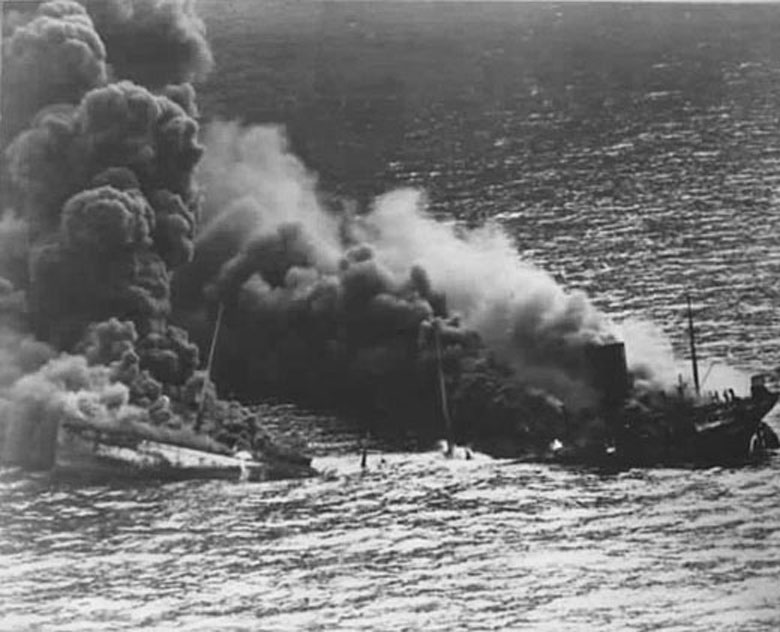Battle of the Atlantic
While forming part of the escort of the convoy HX-156 the US destroyer Reuben James (DD-245) is sunk by U-Boat U-552 west of Iceland while escorting convoy HX-156. This is the first sinking of a US warship by enemy action in the Second World War. 115 sailors of a crew of 160 are lost.
US Destroyer Reuben James Is Sunk |
 |
Eastern Front
The Luftwaffe carries out 45 air raids on Moscow. In the extreme north of Finland, German mountain troops under Gen Eduard Dietl (who comes under the command of the commander-in-chief of the occupation forces in Norway, Nicolaus von Falkenhorst) makes a thrust towards Murmansk, but are soon firmly checked by the Russians. In central Finland there are two German divisions of the XXXVI Army Corps in action, while Finnish troops are operating from the area of Salla to the Karelian isthmus, though their offensive push is becoming exhausted.
In the siege of Leningrad, electricity supplies have been greatly reduced. Many factories have closed down. There is to be no electric lights for domestic consumers.
In the south the Germans capture Simferopol in the Crimea.
CENTRAL SECTORArmy Group Center is exhausted as it struggles to push closer to Moscow. TYPHOON begins to falter as the German 9th Army is bogged down around Kalinin, while the 3rd Panzer Group is involved in heavy fighting with the 19th and the 30th Armies. In the center, the 49th, 43rd and 33rd Armies hold up the 4th Army and the 4th Panzer Group on the Nara at Serpukhov, while on the southern wing Guderian has bypassed Tula.
SOUTHERN SECTORThe 51st Army retreats in confusion, Alma falling. Even at this early stage of the battle, the fighting in the Crimea has netted the Germans 65,000 prisoners.
To give an indication of the catastrophic supply situation the Germans face, of 724 trains that are due to deliver supplies to Army Group South during October, only 195 have arrived. Furthermore, of these, 112 are held over from September.
OPPOSING FORCES END OF OCTOBERDuring October the Germans have received a single mountain division, bringing their strength in Russia to 19 panzer, 15 motorozed and 104 infantry, mountain and light division. Furthermore, it is estimated by the German high command that since June 22 the Red Army has lost 3,200,000 captured, 19,000 tanks, 28,000 artillery pieces and 14,600 aircraft destroyed or captured. These losses alone outnumber the entire force the Germans have assembled for the campaign, but still the Red Army fights on with stubborn determination. In the same period, the Ostheer has suffered 686,000 casualties, including 145,000 killed and 29,000 missing. During October alone 88,000 men have been lost, 41,000 of them killed. Ostheer strength stans 2,700,000 men while just one third of the original motor pool is still operational.
The Stavka has raised 3 new armies, the 10th, 26th and 57th, during the recent fighting and begins to move them closer to Moscow. A reformed 28th Army deploys near Lake Onega, 39th around Yaroslavl, the 58th near Gorki, the 59th at Saratov and the 60th before Stalingrad. To the extreme south, the 61st Army assembles around Astrakhan. In addition, the Stavka appoints Marshal Shaposhnikov Chief of Staff of Soviet Armed Forces. Facing the Germans the Russians have 269 divisions, 65 brigades and 2,200,000 men.
[